You are using an out of date browser. It may not display this or other websites correctly.
You should upgrade or use an alternative browser.
You should upgrade or use an alternative browser.
ESA ExoMars rover
- Thread starter Grey Havoc
- Start date
- Joined
- 21 January 2015
- Messages
- 12,156
- Reaction score
- 16,372
It’s not a flu.plus that freakkin' flu shutting down Italy and now France... (schools, kindergartens, high schools, universities... shut down. Basically we have been told that we young people are vectors for the goddam virus to kill the elderly and vulnerable people. As such, France is locking down its youth - no teaching but also no crowded events. Geez).
- Joined
- 22 January 2006
- Messages
- 4,216
- Reaction score
- 2,016
Agree.fact is, it is a shitstorm...
Now could we go agin to exomars rover, please?
- Joined
- 9 October 2009
- Messages
- 21,976
- Reaction score
- 13,638
The Space Review: Mars in limbo
www.thespacereview.com
- Joined
- 21 January 2015
- Messages
- 12,156
- Reaction score
- 16,372

ЕКА назвало оптимальное время старта совместной с Россией миссии к Марсу
Европейские специалисты считают конец сентября – начало октября 2022 года одним из наиболее благоприятных сроков для запуска совместной с Россией посадочной... РИА Новости, 22.04.2020
"One of the scenarios of the ExoMars-2022 mission, which is currently being analyzed, involves launching in late September or early October 2022 and landing in June 2023," Pishel said, adding that the final decision will be made jointly with Roscosmos.
- Joined
- 21 January 2015
- Messages
- 12,156
- Reaction score
- 16,372
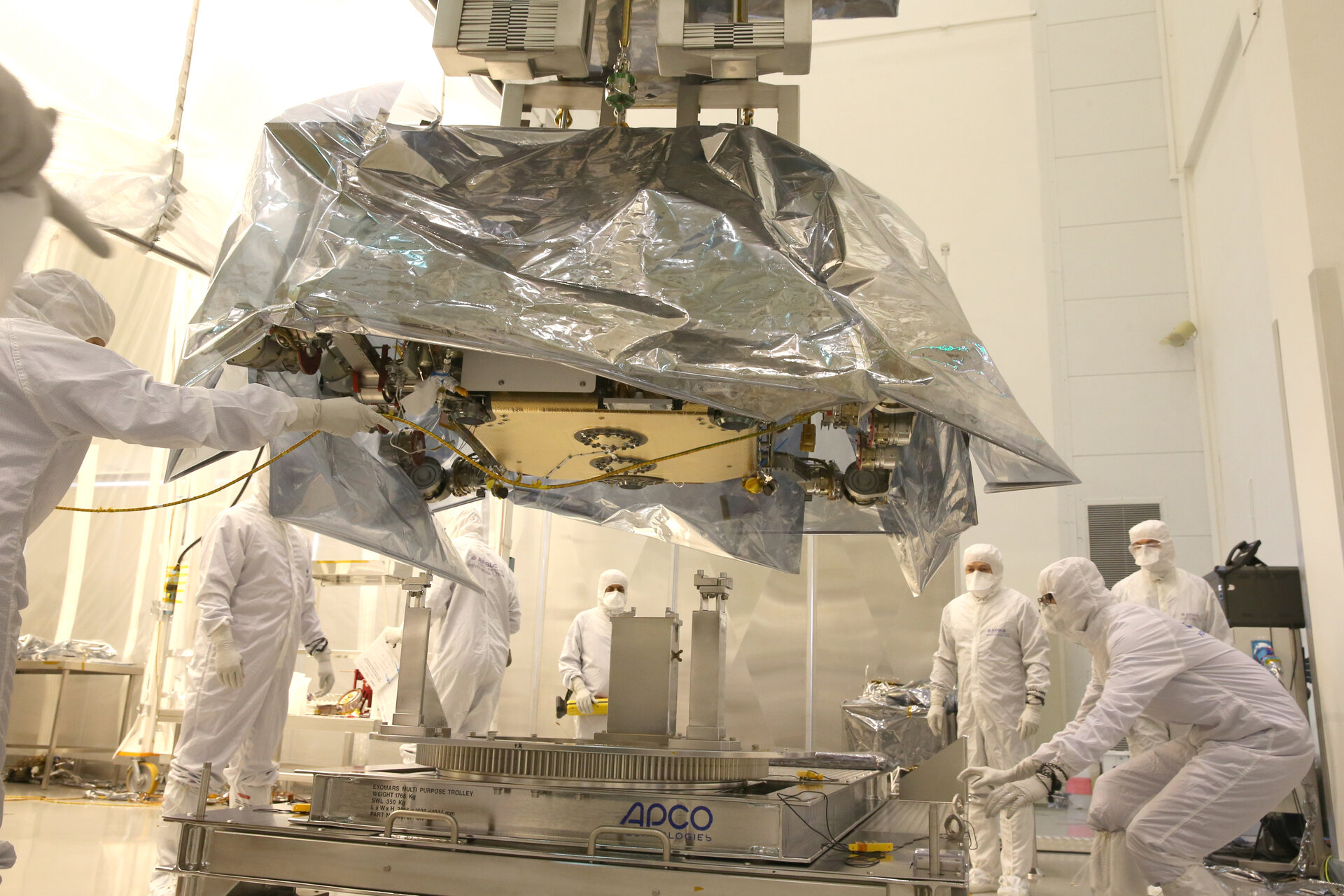
ExoMars rover upgrades and parachute tests
The second ExoMars mission, scheduled for launch to the Red Planet in 2022, is taking advantage of the extra time to upgrade some of the rover’s instruments and get ready for the next parachute high-altitude drop tests.
www.esa.int
FighterJock
ACCESS: Above Top Secret
- Joined
- 29 October 2007
- Messages
- 5,609
- Reaction score
- 5,941

ExoMars rover upgrades and parachute tests
The second ExoMars mission, scheduled for launch to the Red Planet in 2022, is taking advantage of the extra time to upgrade some of the rover’s instruments and get ready for the next parachute high-altitude drop tests.www.esa.int
Good news for Exo Mars, the upgraded instruments will help with the science when the rover gets to Mars in 2022.
- Joined
- 21 January 2015
- Messages
- 12,156
- Reaction score
- 16,372
Mars rover revival
As Mars exploration prepares for a rebirth, a European rover tunes up its gear for the challenges ahead.
Tomorrow, 23 July, ESA and dozens of industrial partners will assess the readiness of the ExoMars robotic explorer, named Rosalind Franklin, for a trip to the Red Planet in 2022. The European rover will drill down to two metres into the martian surface to sample the soil, analyse its composition and search for evidence of life buried underground.
The rover successfully proved that it is fit to endure the martian conditions during the environmental test campaign earlier this year in Toulouse, France. This laboratory on wheels withstood temperatures as low as –120°C and less than one hundredth of Earth’s atmospheric pressure to simulate the extremes of its journey through space and on the surface of Mars.
By the end of this week a more robust set of solar panels will begin its trip to reunite with the rover after some cracks were detected during those environmental tests. New fasteners are in place and will be on their way from the Airbus facilities in Stevenage, in the UK, to Thales Alenia Space in Turin, Italy, where the rover awaits power up at the beginning of August.
The disruptions caused by the coronavirus pandemic have added new obstacles for industry across Europe on the road to Mars. Parachute and interface tests are expected to resume in October.
New missions to Mars launch from a broad range of nations – while the United Arab Emirates’ historic first mission to Mars lifted off from Japan last Sunday, China is preparing to launch tomorrow its first rover to Mars, known as Tianwen-1. NASA’s Mars 2020 mission is set to take off with the Perseverance rover onboard next week, on July 30.
These missions focus on the search for evidence of life on the Red Planet and a better understanding of how Earth and Mars evolved so differently.
“We hope that ESA’s Rosalind Franklin rover will help write a new page in Mars exploration by allowing us to study organic molecules on the spot,” says Jorge Vago, ESA’s ExoMars project scientist.
Dr Rosalind Franklin, the prominent scientist behind the discovery of the structure of DNA, one of life’s most important molecules, would have been 100 years old on 25 July this year. Her niece, also named Rosalind Franklin in her memory, points out that the X-ray diffraction expert “never conceived science as a race of competitors.”
After a visit to ESA’s technical centre in the Netherlands last year, Rosalind believes that her aunt would have loved the ExoMars team spirit. “The work of ESA engineers on the rover struck me – they really do it for the results, not for themselves. This what Rosalind Franklin was all about: commitment and dedication to science,” said Rosalind from her home in California, US.
A series of talks and events is taking place around the globe this week to celebrate the centenary of this “woman of integrity who went after scientific discovery for the betterment of humankind”, as her niece describes her. The legacy of the scientist lives on today, and the ExoMars rover will help leave her symbolic footprint on Mars in 2023.
The ExoMars rover is part of the ExoMars programme, a joint endeavour between ESA and the Russian State Space Corporation, Roscosmos.
As Mars exploration prepares for a rebirth, a European rover tunes up its gear for the challenges ahead.
Tomorrow, 23 July, ESA and dozens of industrial partners will assess the readiness of the ExoMars robotic explorer, named Rosalind Franklin, for a trip to the Red Planet in 2022. The European rover will drill down to two metres into the martian surface to sample the soil, analyse its composition and search for evidence of life buried underground.
The rover successfully proved that it is fit to endure the martian conditions during the environmental test campaign earlier this year in Toulouse, France. This laboratory on wheels withstood temperatures as low as –120°C and less than one hundredth of Earth’s atmospheric pressure to simulate the extremes of its journey through space and on the surface of Mars.
By the end of this week a more robust set of solar panels will begin its trip to reunite with the rover after some cracks were detected during those environmental tests. New fasteners are in place and will be on their way from the Airbus facilities in Stevenage, in the UK, to Thales Alenia Space in Turin, Italy, where the rover awaits power up at the beginning of August.
The disruptions caused by the coronavirus pandemic have added new obstacles for industry across Europe on the road to Mars. Parachute and interface tests are expected to resume in October.
New missions to Mars launch from a broad range of nations – while the United Arab Emirates’ historic first mission to Mars lifted off from Japan last Sunday, China is preparing to launch tomorrow its first rover to Mars, known as Tianwen-1. NASA’s Mars 2020 mission is set to take off with the Perseverance rover onboard next week, on July 30.
These missions focus on the search for evidence of life on the Red Planet and a better understanding of how Earth and Mars evolved so differently.
“We hope that ESA’s Rosalind Franklin rover will help write a new page in Mars exploration by allowing us to study organic molecules on the spot,” says Jorge Vago, ESA’s ExoMars project scientist.
Dr Rosalind Franklin, the prominent scientist behind the discovery of the structure of DNA, one of life’s most important molecules, would have been 100 years old on 25 July this year. Her niece, also named Rosalind Franklin in her memory, points out that the X-ray diffraction expert “never conceived science as a race of competitors.”
After a visit to ESA’s technical centre in the Netherlands last year, Rosalind believes that her aunt would have loved the ExoMars team spirit. “The work of ESA engineers on the rover struck me – they really do it for the results, not for themselves. This what Rosalind Franklin was all about: commitment and dedication to science,” said Rosalind from her home in California, US.
A series of talks and events is taking place around the globe this week to celebrate the centenary of this “woman of integrity who went after scientific discovery for the betterment of humankind”, as her niece describes her. The legacy of the scientist lives on today, and the ExoMars rover will help leave her symbolic footprint on Mars in 2023.
The ExoMars rover is part of the ExoMars programme, a joint endeavour between ESA and the Russian State Space Corporation, Roscosmos.
- Joined
- 21 January 2015
- Messages
- 12,156
- Reaction score
- 16,372
And the Rosalind Franklyn rover received its solar arrays:
View: https://twitter.com/Thales_Alenia_S/status/1301158011583574017
View: https://twitter.com/Thales_Alenia_S/status/1301158011583574017
- Joined
- 21 January 2015
- Messages
- 12,156
- Reaction score
- 16,372
- Joined
- 21 January 2015
- Messages
- 12,156
- Reaction score
- 16,372
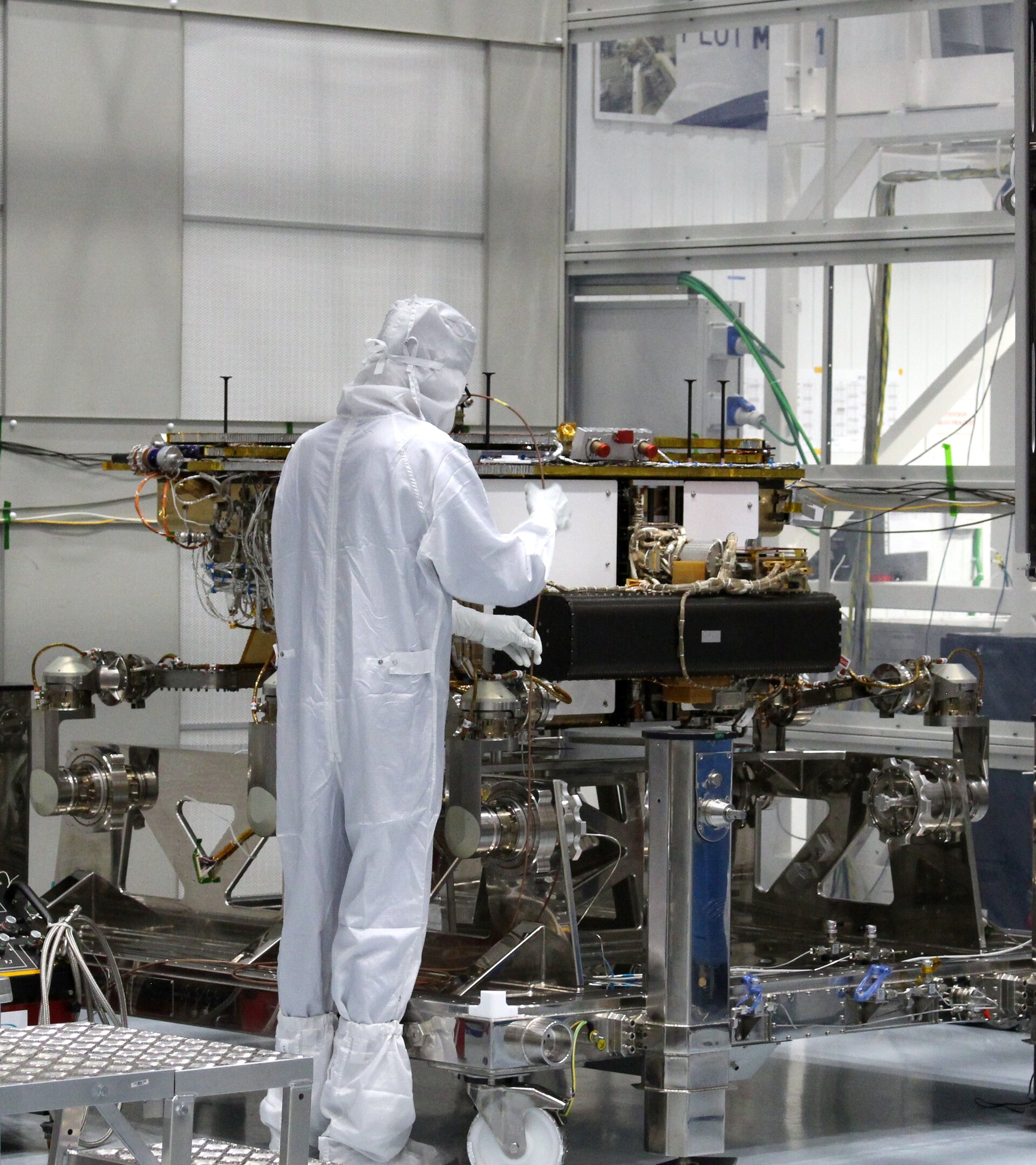
Exomars modules reunited
The Rosalind Franklin ExoMars rover has been reunited with the Kazachok surface platform, carrier module and descent module in Cannes, France.
www.esa.int
FighterJock
ACCESS: Above Top Secret
- Joined
- 29 October 2007
- Messages
- 5,609
- Reaction score
- 5,941
Just discovered this BBC News article about the Rosalind Franklind rover, it is now taking shape at the Canes France factory of Thales Alenia Space.
https://www.bbc.co.uk/news/science-environment-55229999
https://www.bbc.co.uk/news/science-environment-55229999
- Joined
- 9 October 2009
- Messages
- 21,976
- Reaction score
- 13,638

CaSSIS mission: The camera capturing Mars' craters and canyons
The instrument takes images of dust storms, frost deposits and minerals on the Red Planet's surface.
However, the Red Planet is already being closely observed.
Since its launch in 2016 and its subsequent orbit insertion around Mars, an instrument named the Colour and Stereo Surface Imaging System (CaSSIS) has been used to enhance scientists' knowledge of the planet's surface.
The camera is travelling with the European Space Agency's (Esa) Exomars Trace Gas Orbiter, which is studying methane and other rare gases in the Martian atmosphere.
The technical goal of CaSSIS is to look at potential landing sites for future missions - one being Esa's Exomars mission that is due to launch in 2022.
However, as part of its scientific activities, it has also observed a variety of minerals, canyons, craters and other geological features on the surface.
The images, which have been published on Instagram, also show frost deposits and dust storms.
- Joined
- 21 January 2015
- Messages
- 12,156
- Reaction score
- 16,372
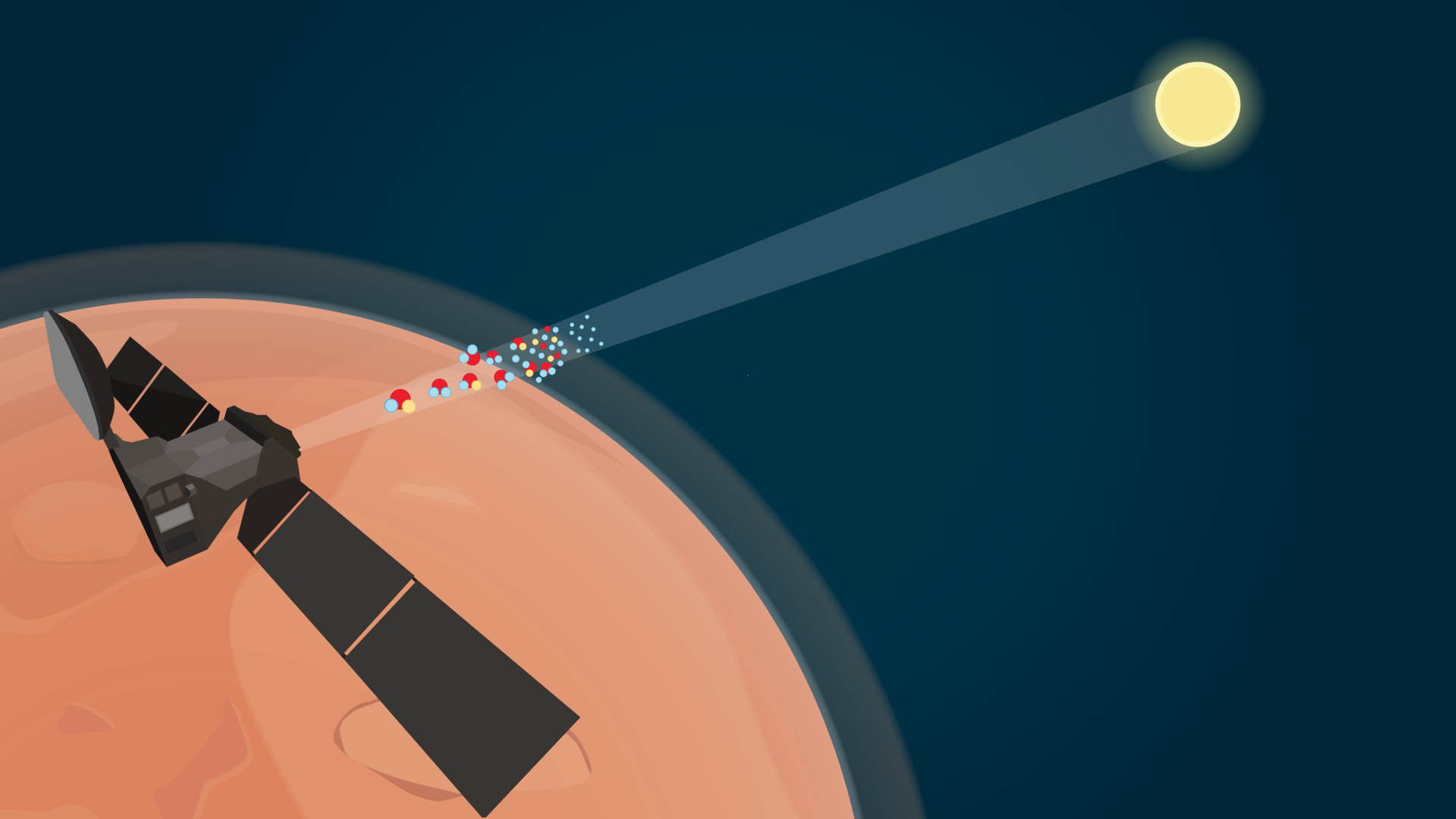
ExoMars discovers new gas and traces water loss on Mars
Sea salt embedded in the dusty surface of Mars and lofted into the planet’s atmosphere has led to the discovery of hydrogen chloride – the first time the ESA-Roscosmos ExoMars Trace Gas Orbiter has detected a new gas. The spacecraft is also providing new information about how Mars is losing its...
www.esa.int
- Joined
- 21 January 2015
- Messages
- 12,156
- Reaction score
- 16,372
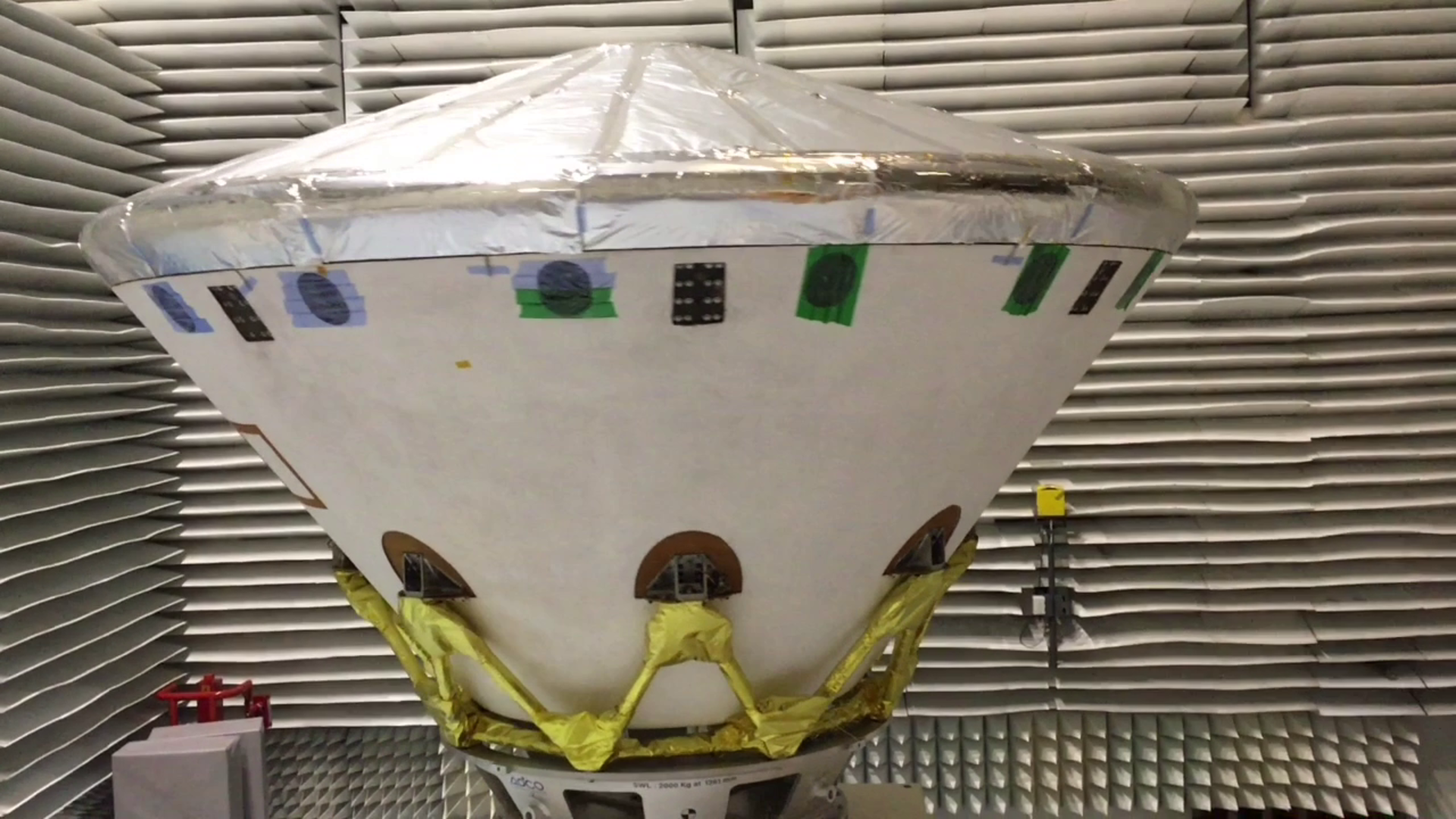
ExoMars goes for a spin
The full ExoMars 2022 mission comprising the carrier module, descent module, Kazachok surface platform and Rosalind Franklin rover have completed essential ‘spin tests’ in preparation for their journey to Mars Rosalind Franklin’s rover twin on Earth has executed trial science activities for the...
www.esa.int
- Joined
- 21 January 2015
- Messages
- 12,156
- Reaction score
- 16,372
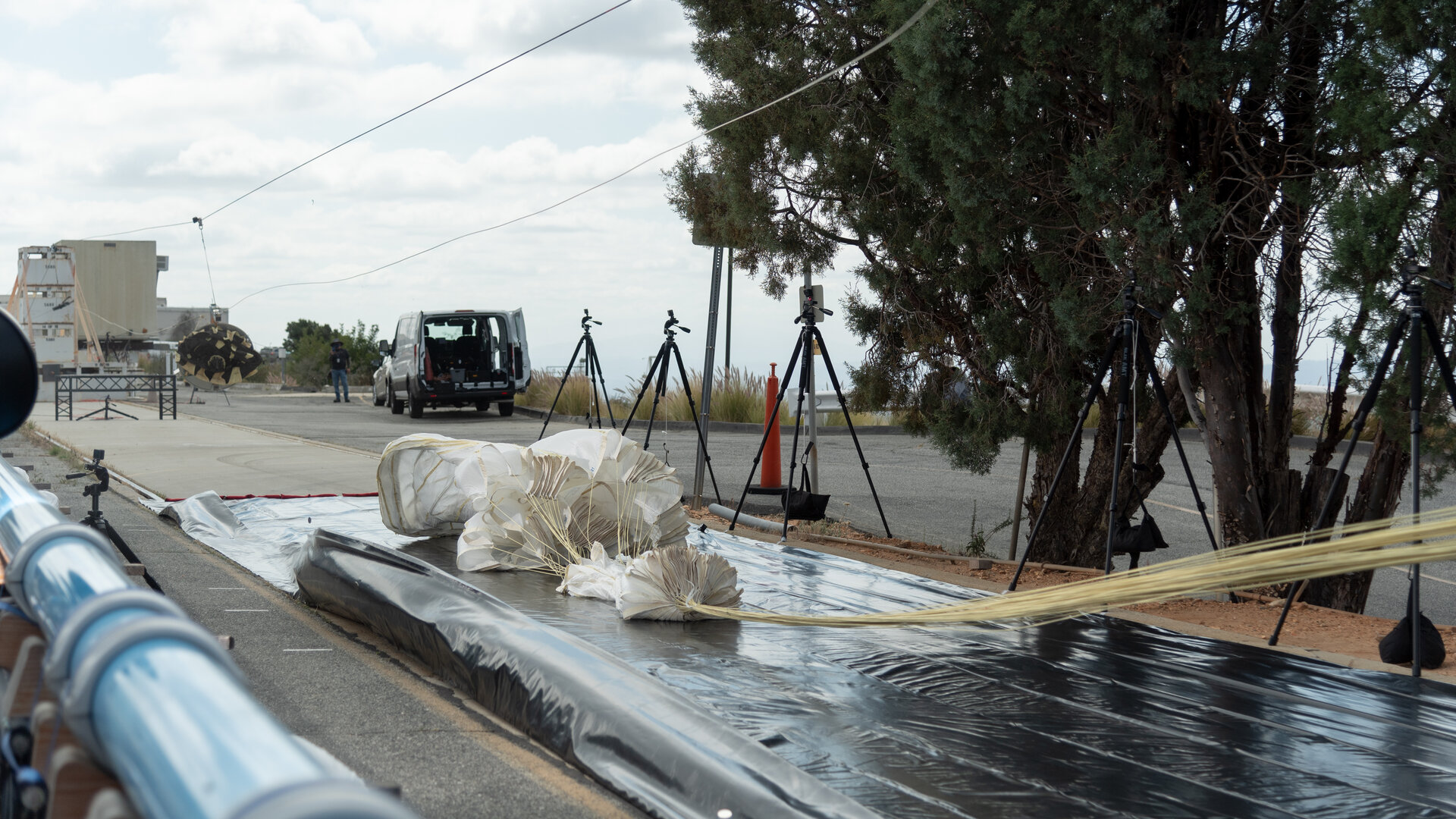
New ExoMars parachute ready for high altitude drop
A series of ground-based high-speed extraction tests confirm the readiness of a new and upgraded parachute and bag system for a high-altitude drop test in early June, part of critical preparations to keep the ExoMars 2022 mission on track for its next launch window.
www.esa.int

ExoMars goes for a spin
The full ExoMars 2022 mission comprising the carrier module, descent module, Kazachok surface platform and Rosalind Franklin rover have completed essential ‘spin tests’ in preparation for their journey to Mars Rosalind Franklin’s rover twin on Earth has executed trial science activities for the...www.esa.int
Those names, really ! Kazachok WTH ?
Take your time Europe - even being third behind China is better than screwing up.
FighterJock
ACCESS: Above Top Secret
- Joined
- 29 October 2007
- Messages
- 5,609
- Reaction score
- 5,941

ExoMars goes for a spin
The full ExoMars 2022 mission comprising the carrier module, descent module, Kazachok surface platform and Rosalind Franklin rover have completed essential ‘spin tests’ in preparation for their journey to Mars Rosalind Franklin’s rover twin on Earth has executed trial science activities for the...www.esa.int
Those names, really ! Kazachok WTH ?
Take your time Europe - even being third behind China is better than screwing up.
Europe needs to take its time over the rover, we do not want a repeat of what happened to Beagle 2.
- Joined
- 21 January 2015
- Messages
- 12,156
- Reaction score
- 16,372
Some testing issues for the high-altitude release:
View: https://twitter.com/LaunchStuff/status/1400302922605416449
View: https://twitter.com/LaunchStuff/status/1400302922605416449
- Joined
- 21 January 2015
- Messages
- 12,156
- Reaction score
- 16,372
- Joined
- 9 October 2009
- Messages
- 21,976
- Reaction score
- 13,638

Europe's ExoMars parachute still experiencing problems in drop test
Europe's ExoMars mission is still experiencing parachute problems ahead of next year's launch.

Landing on Mars is one step closer for British-built rover
London, UK (SPX) Jul 05, 2021 - A new and upgraded parachute for the UK-built Rosalind Franklin Mars rover has successfully passed a series of high-altitude tests, bringing further exploration of the Red Planet one step closer.
www.marsdaily.com
- Joined
- 21 January 2015
- Messages
- 12,156
- Reaction score
- 16,372
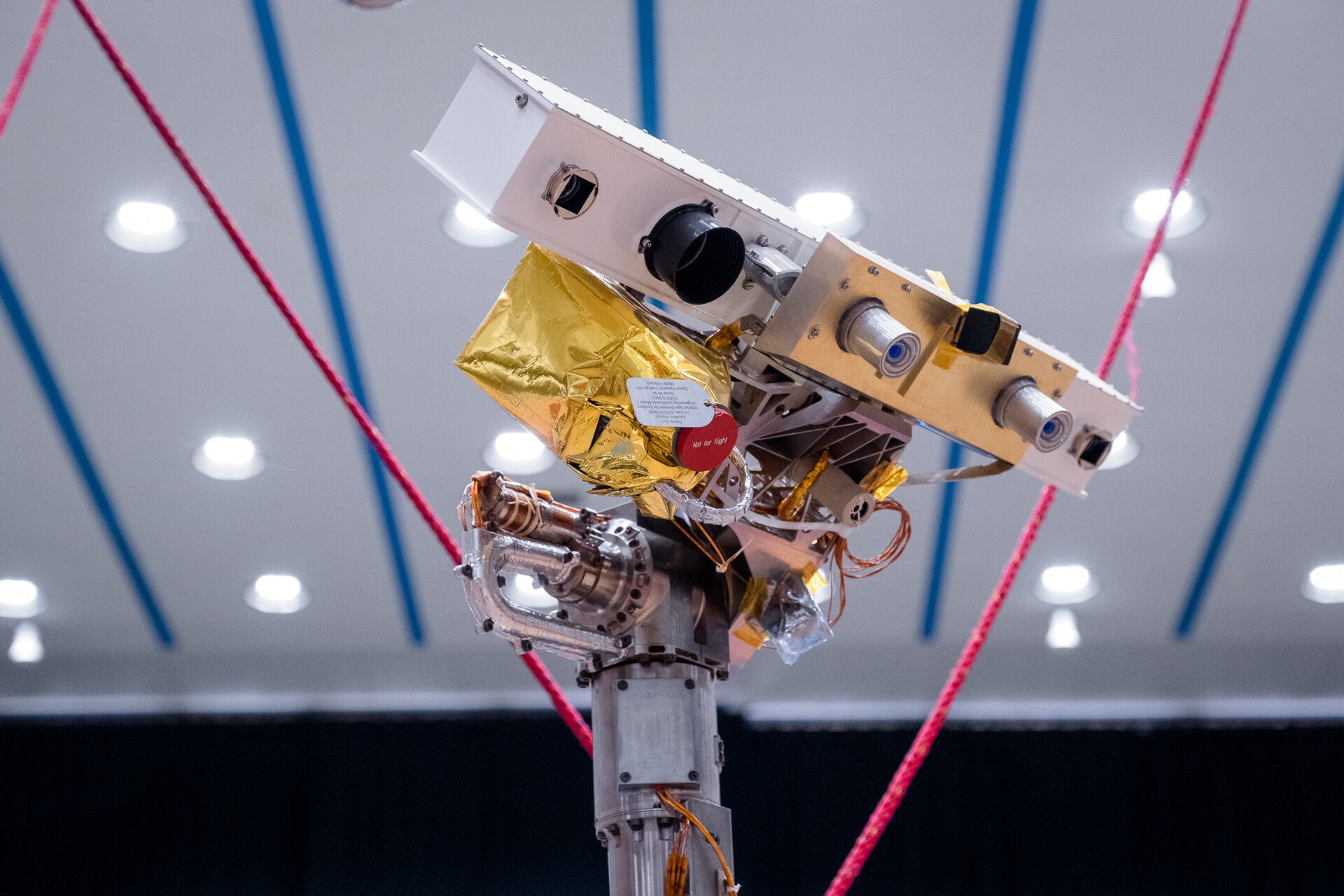
Science in motion for ExoMars twin rover
The first science tests for the ExoMars rover replica kicked off after several weeks of driving tests around the Mars Terrain Simulator at the ALTEC premises in Turin, Italy.
www.esa.int
bearnard97
ACCESS: Confidential
- Joined
- 5 January 2021
- Messages
- 109
- Reaction score
- 107
I wanna say a few words about the Rosalin Franklin mars rover by the European Space Agency. This mission is gonna be launched next year and the main purposes of this mission will be the exploration of the surface of Mars and looking for some forms of life and their traces. https://www.skyrora.com/post/uk-space-industry-mars-rover-one-step-closer-to-completion
- Joined
- 21 January 2015
- Messages
- 12,156
- Reaction score
- 16,372
- Joined
- 21 January 2015
- Messages
- 12,156
- Reaction score
- 16,372
ESA’s Rosalind Franklin twin rover on Earth has drilled down and extracted samples 1.7 metres into the ground – much deeper than any other martian rover has ever attempted.
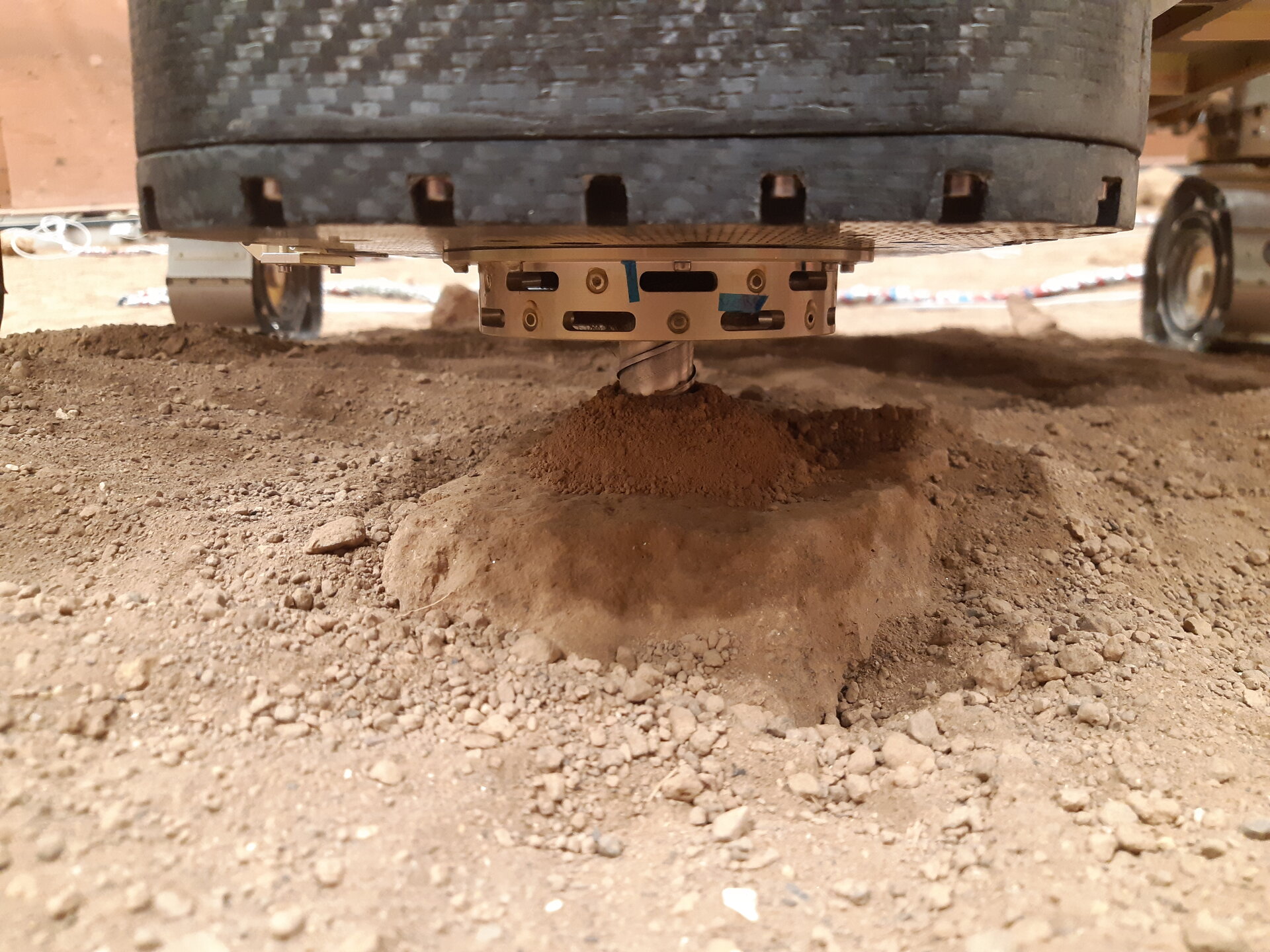
First deep drilling success for ExoMars
ESA’s Rosalind Franklin twin rover on Earth has drilled down and extracted samples 1.7 metres into the ground – much deeper than any other martian rover has ever attempted.
www.esa.int
- Joined
- 21 January 2015
- Messages
- 12,156
- Reaction score
- 16,372
Video of the tests taking place in Turin these days:
View: https://twitter.com/ESA_fr/status/1438136997500043270
View: https://twitter.com/ESA_fr/status/1438136997500043270
- Joined
- 21 January 2015
- Messages
- 12,156
- Reaction score
- 16,372
FighterJock
ACCESS: Above Top Secret
- Joined
- 29 October 2007
- Messages
- 5,609
- Reaction score
- 5,941
Let's hope that RosalindFranklin does not have to escape from a sand trap on Mars for real once it gets there.
- Joined
- 21 January 2015
- Messages
- 12,156
- Reaction score
- 16,372
ExoMars discovers hidden water in Mars’ Grand Canyon
“FREND revealed an area with an unusually large amount of hydrogen in the colossal Valles Marineris canyon system: assuming the hydrogen we see is bound into water molecules, as much as 40% of the near-surface material in this region appears to be water.”
The water-rich area is about the size of the Netherlands and overlaps with the deep valleys of Candor Chaos, part of the canyon system considered promising in our hunt for water on Mars.
- Joined
- 21 January 2015
- Messages
- 12,156
- Reaction score
- 16,372
- Joined
- 21 January 2015
- Messages
- 12,156
- Reaction score
- 16,372
Crater Tree Rings
This feature could easily be mistaken for a tree stump with characteristic concentric rings. It’s actually an impressive birds-eye view into an ice-rich impact crater on Mars. Tree rings provide snapshots of Earth’s past climate and, although formed in a very different way, the patterns inside this crater reveal details of the Red Planet’s history, too.
The image was taken by the CaSSIS camera onboard the ESA/Roscosmos ExoMars Trace Gas Orbiter (TGO) on 13 June 2021 in the vast northern plains of Acidalia Planitia, centred at 51.9°N/326.7°E.
The interior of the crater is filled with deposits that are probably water-ice rich. It is thought that these deposits were laid down during an earlier time in Mars’ history when the inclination of the planet’s spin axis allowed water-ice deposits to form at lower latitudes than it does today. Just like on Earth, Mars’ tilt gives rises to seasons, but unlike Earth its tilt has changed dramatically over long periods of time.
One of the notable features in the crater deposits is the presence of quasi-circular and polygonal patterns of fractures. These features are likely a result of seasonal changes in temperature that cause cycles of expansion and contraction of the ice-rich material, eventually leading to the development of fractures.
Understanding the history of water on Mars and if this once allowed life to flourish is at the heart of ESA’s ExoMars missions. TGO arrived at Mars in 2016 and began its full science mission in 2018. The spacecraft is not only returning spectacular images, but also providing the best ever inventory of the planet’s atmospheric gases with a particular emphasis on geologically and biologically important gases, and mapping the planet’s surface for water-rich locations. It will also provide data relay services for the second ExoMars mission comprising the Rosalind Franklin rover and Kazachok platform, when it arrives on Mars in 2023. The rover will explore a region of Mars thought once to have hosted an ancient ocean, and will search underground for signs of life.

This feature could easily be mistaken for a tree stump with characteristic concentric rings. It’s actually an impressive birds-eye view into an ice-rich impact crater on Mars. Tree rings provide snapshots of Earth’s past climate and, although formed in a very different way, the patterns inside this crater reveal details of the Red Planet’s history, too.
The image was taken by the CaSSIS camera onboard the ESA/Roscosmos ExoMars Trace Gas Orbiter (TGO) on 13 June 2021 in the vast northern plains of Acidalia Planitia, centred at 51.9°N/326.7°E.
The interior of the crater is filled with deposits that are probably water-ice rich. It is thought that these deposits were laid down during an earlier time in Mars’ history when the inclination of the planet’s spin axis allowed water-ice deposits to form at lower latitudes than it does today. Just like on Earth, Mars’ tilt gives rises to seasons, but unlike Earth its tilt has changed dramatically over long periods of time.
One of the notable features in the crater deposits is the presence of quasi-circular and polygonal patterns of fractures. These features are likely a result of seasonal changes in temperature that cause cycles of expansion and contraction of the ice-rich material, eventually leading to the development of fractures.
Understanding the history of water on Mars and if this once allowed life to flourish is at the heart of ESA’s ExoMars missions. TGO arrived at Mars in 2016 and began its full science mission in 2018. The spacecraft is not only returning spectacular images, but also providing the best ever inventory of the planet’s atmospheric gases with a particular emphasis on geologically and biologically important gases, and mapping the planet’s surface for water-rich locations. It will also provide data relay services for the second ExoMars mission comprising the Rosalind Franklin rover and Kazachok platform, when it arrives on Mars in 2023. The rover will explore a region of Mars thought once to have hosted an ancient ocean, and will search underground for signs of life.

- Joined
- 21 January 2015
- Messages
- 12,156
- Reaction score
- 16,372
After missing its initial launch window in 2020 in part because of the pandemic, the European Space Agency’s ExoMars mission is on schedule for a launch in September.
ESA now believes it has solved the problems with the parachutes after some assistance from NASA. In December, ESA conducted high-altitude tests of the parachutes in Oregon, successfully deploying two different versions of the larger of the lander’s two parachutes, 35 meters in diameter.
The rover itself has completed tests, with what ESA described in a statement as only “some minor tuning” left to do. “The rover is ready, and together with the recent drop test success for the parachutes, we are positive to be in time for the September launch date,” Pietro Baglioni, ESA ExoMars rover team leader, said in the statement.
Those preparations, officials said, included repairing electronics on the descent module of the spacecraft. “It controls the main braking engine for the final landing on the surface of the red planet, and it’s one of the elements that caused the delay of the launch back in 2020,” said David Parker, director of human and robotic space exploration at ESA. There are ongoing tests of the electronics as well as software changes, he said.

ExoMars on schedule for September launch
After missing its initial launch window in 2020 in part because of the pandemic, the European Space Agency’s ExoMars mission is on schedule for a launch in September.
 spacenews.com
spacenews.com
- Joined
- 9 October 2009
- Messages
- 21,976
- Reaction score
- 13,638

ExoMars Rover 2022 Launch Now 'Very Unlikely' Due to Russian Invasion, ESA Says
The already-delayed Russian-European Mars mission now faces even more uncertainty.
Nik
ACCESS: Top Secret
- Joined
- 15 July 2009
- Messages
- 1,269
- Reaction score
- 1,063
Beyond the humanity, looks like ISS needs a Plan_B orbit-lifting kit real-soon, and a lot more than exo-Mars has been blocked 'until further notice'.
IIRC, there's a lot of western launchers reliant on Russian engines, although there are enough in stock for now. UK's GPS-ish swarm is stuck at launch-site, can't even find another carrier. D'you wonder UK is hastily approving fast-track development of a small launch site in Scotland ??
IIRC, there's a lot of western launchers reliant on Russian engines, although there are enough in stock for now. UK's GPS-ish swarm is stuck at launch-site, can't even find another carrier. D'you wonder UK is hastily approving fast-track development of a small launch site in Scotland ??
FighterJock
ACCESS: Above Top Secret
- Joined
- 29 October 2007
- Messages
- 5,609
- Reaction score
- 5,941
D'you wonder UK is hastily approving fast-track development of a small launch site in Scotland ??
We could always build a large launch site and launch our own large satellites, or even use Machrihanish for the Skylon spaceplane and launch satellites using that way.
- Joined
- 9 October 2009
- Messages
- 21,976
- Reaction score
- 13,638
One problem though is that work on Skylon has been on hold for quite a while, primarily because of NASA's fear that it would complicate funding for their own in-house programs, for example SLS.
FighterJock
ACCESS: Above Top Secret
- Joined
- 29 October 2007
- Messages
- 5,609
- Reaction score
- 5,941
One problem though is that work on Skylon has been on hold for quite a while, primarily because of NASA's fear that it would complicate funding for their own in-house programs, for example SLS.
NASA has nothing to fear from Skylon it would primarily be used for launching satellites as I have mentioned above and would not complicate the funding for SLS which is going to the Moon, Mars and the Asteroid belt. Instead NASA should be funding both programs.

ExoMars Rover 2022 Launch Now 'Very Unlikely' Due to Russian Invasion, ESA Says
The already-delayed Russian-European Mars mission now faces even more uncertainty.gizmodo.com
Well if the present crisis spares Exomars from its Proton launch...
- Joined
- 21 January 2015
- Messages
- 12,156
- Reaction score
- 16,372
The rover apparently is possibly detachable from its Russian lander. But this will require a new lander to be built as well as new launcher all this will cost more time and money. Plus it probably requires finding a new space partner. In other words the rover isn’t going anywhere any time soon.
Similar threads
-
-
-
Nasa chief scientist: 'We’re close to finding and announcing alien life on Mars....but is the world ready?'
- Started by Flyaway
- Replies: 23
-
-
